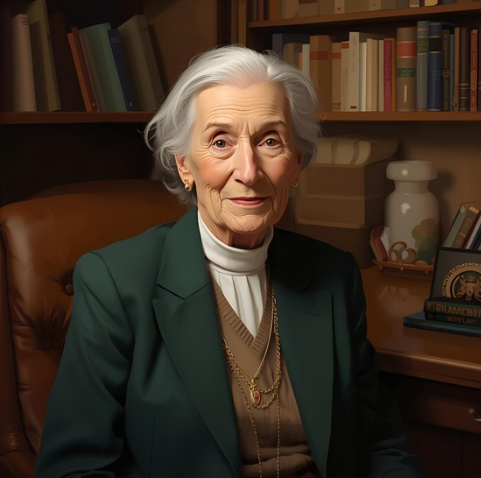Introduction to Jane Goodall
Jane Goodall has made a significant mark on the fields of primatology and conservation through her pioneering work and unique approach to studying wildlife. Known for her groundbreaking observations of chimpanzees in their natural habitat, Goodall’s contributions have reshaped the way scientists and the public view animals, particularly primates. Her innovative methods and deep empathy for the creatures she studies have set her apart as a trailblazer in scientific research.
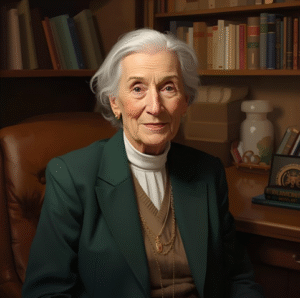
Goodall’s fascination with animals began in childhood, but her journey to becoming one of the most recognized figures in environmental science required determination and a willingness to challenge conventional practices. Her studies in Gombe Stream National Park allowed her to make revolutionary discoveries that highlighted the cognitive abilities and intricate social structures of chimpanzees. These findings not only expanded scientific knowledge but also bridged the gap between humans and other animals, fostering a greater appreciation for the natural world.
In addition to her scientific achievements, Goodall’s ability to communicate complex ideas to diverse audiences has made her a highly influential figure beyond the academic community. She has dedicated much of her life to sharing her experiences and advocating for the protection of wildlife, inspiring millions to reflect on humanity’s role in preserving the planet. Through her extensive efforts, Goodall has become a symbol of hope and a source of motivation for those seeking to create a sustainable future.
Early Life and Inspiration
Jane Goodall grew up with a natural curiosity about the world around her. From a young age, she displayed an extraordinary interest in animals, often spending time observing their behavior and marveling at their interactions. Her childhood was filled with exploration, fueled by an inquisitive mind and a deep-seated desire to connect with nature. She was encouraged by her mother, who nurtured her enthusiasm and supported her ambition, even when it seemed unconventional for the time.
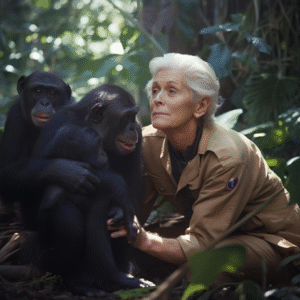
A pivotal moment in Goodall’s early life came when she received a copy of “The Story of Doctor Dolittle,” a book that sparked her imagination and solidified her dream of working with animals in faraway lands. This fascination grew stronger as she delved deeper into the world of wildlife and began forming the vision of a life dedicated to understanding and caring for animals.
Goodall’s path to Africa began to take shape when she met Louis Leakey, a distinguished anthropologist and paleontologist, during her time in Kenya. Leakey, impressed by her passion and enthusiasm, saw in her the potential to contribute meaningfully to the study of primates. He believed her fresh perspective and lack of formal scientific training could bring valuable insights to the field, as her approach would be untainted by traditional academic methods.
It was under Leakey’s mentorship that Goodall was given the opportunity to travel to Gombe Stream National Park in Tanzania. With no formal scientific background, she relied on her keen observational skills, patience, and innate ability to connect with the animals she studied. Her first days in Gombe were marked by challenges, but Goodall’s unwavering determination allowed her to overcome the initial obstacles and begin her groundbreaking work.
Groundbreaking Research
Jane Goodall’s approach to studying chimpanzees was innovative and transformative, breaking away from traditional scientific methods of the time. By immersing herself in the chimpanzees’ environment and patiently observing their daily lives, she was able to form connections that allowed her to study them up close. This close interaction provided unique insights into their behaviors, which were previously unknown to the scientific community.
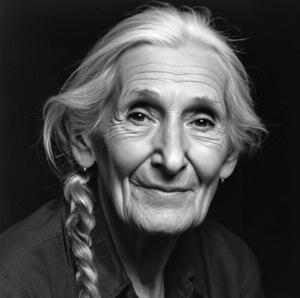
One of her earliest and most remarkable observations was that chimpanzees are capable of using tools. Goodall witnessed a chimpanzee removing leaves from a twig to use it for extracting termites from a mound. This behavior demonstrated not only tool use but also the ability to modify an object for a specific purpose, a skill that was thought to be uniquely human. This discovery led to a fundamental shift in how scientists defined humans in relation to other species, forcing a reevaluation of what separates humans from animals.
Goodall also documented intricate social dynamics within chimpanzee groups. She observed behaviors such as grooming, which served as a way to strengthen bonds and maintain social cohesion. She noted that these interactions were not merely for hygiene but held emotional and social significance, revealing a level of complexity in their relationships that was comparable to those seen in human communities.
Her research shed light on the wide range of emotions and intelligence exhibited by chimpanzees. She recorded displays of affection, playfulness, and grief, showing that their emotional lives were far more developed than previously acknowledged. These observations helped bridge the gap in understanding between humans and chimpanzees, emphasizing the similarities in behavior and emotional capacity.
Perhaps one of the more startling aspects of her findings was the evidence of conflict within chimpanzee groups. Goodall documented instances of aggression and even warfare between groups, challenging the notion that violent behavior was unique to humans. This revelation sparked debates among scientists and raised important questions about the roots of human violence and cooperation.
In addition to group dynamics, Goodall uncovered the ways in which chimpanzees communicate with one another. She noted their use of vocalizations, facial expressions, and gestures to convey a range of messages, from warnings to invitations to play. These forms of communication underscored their ability to share information and express intentions, providing further evidence of their cognitive sophistication.
Goodall’s meticulous documentation of chimpanzee behavior also highlighted the cultural elements present within their communities. She observed that different groups of chimpanzees had distinct habits and practices, such as unique ways of gathering food or using tools. This indicated that these behaviors were learned and passed down, showcasing an early form of cultural transmission.
Her findings have had a lasting influence on the scientific community, inspiring countless studies into primate behavior, cognition, and communication. By challenging conventional beliefs and demonstrating the depth of chimpanzee intelligence and social structures, Goodall not only advanced the field of primatology but also fostered a deeper appreciation for the connections between humans and animals.
Conservation Efforts
Jane Goodall’s dedication to conservation is rooted in her profound understanding of the delicate balance between humans, animals, and the environment. After years of studying chimpanzees and witnessing the threats they face, she turned her focus toward protecting their habitats and addressing the broader environmental challenges that endanger countless species. Recognizing the interconnectedness of ecosystems, Goodall advocates for holistic solutions that benefit both wildlife and local communities.
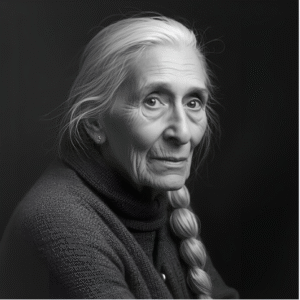
A cornerstone of her conservation work is the establishment of the Jane Goodall Institute, which has played a critical role in supporting habitat preservation and creating programs that empower local populations to become stewards of the environment. These initiatives emphasize sustainable development, helping communities adopt practices that protect forests while improving their quality of life. By addressing issues such as poverty, education, and health, the institute demonstrates how conservation efforts can coexist with human well-being.
Goodall also emphasizes the importance of youth engagement in environmental advocacy. Through her Roots & Shoots program, young people around the globe are encouraged to take action in their communities to tackle local and global challenges. This program fosters a sense of responsibility and connection to the planet, equipping the next generation with the tools to drive meaningful change.
Her tireless campaigning has shed light on the devastating impacts of deforestation, illegal wildlife trade, and unsustainable agricultural practices. Goodall uses her platform to highlight the consequences of these activities, urging industries, governments, and individuals to adopt more environmentally conscious practices. She actively collaborates with organizations and policymakers to promote initiatives aimed at reducing habitat destruction and mitigating climate change.
In addition to her advocacy, Goodall champions the role of science and technology in conservation. She supports the use of satellite imaging, community-based mapping, and other innovations to monitor ecosystems and track wildlife populations. By combining traditional knowledge with modern tools, her initiatives create effective strategies for long-term conservation.
Goodall’s work also underscores the ethical considerations in how humans interact with animals and the natural world. She has been a prominent voice against practices that exploit animals, such as the use of chimpanzees in entertainment and research, and she has worked to ensure that wildlife is treated with respect and dignity. Her efforts have led to greater awareness and policy changes that improve animal welfare on a global scale.
Through her unparalleled dedication, Jane Goodall continues to inspire collective action toward building a sustainable and equitable future. Her approach emphasizes collaboration, compassion, and an unwavering belief in the capacity of individuals and communities to drive progress.
Legacy and Influence
Jane Goodall’s impact extends far beyond her scientific contributions, shaping the fields of conservation and primatology in profound ways. Her unique approach to research and her advocacy for the natural world have left an enduring mark on both the scientific community and society as a whole. Through her work, Goodall has challenged people to rethink their relationship with nature, urging individuals and institutions to adopt more sustainable and ethical practices.
One of the most significant aspects of her influence is the way she has bridged the gap between science and public engagement. Goodall’s ability to communicate her findings and experiences has made complex topics accessible to global audiences, fostering a deeper understanding of environmental issues. Her compelling storytelling and unwavering optimism have encouraged people from all walks of life to take an active role in protecting the planet. This ability to connect with others has been instrumental in raising awareness about the urgent need for conservation and ethical treatment of animals.
Goodall has also been a catalyst for inspiring future generations of scientists, conservationists, and activists. Her journey demonstrates that curiosity, determination, and compassion can lead to meaningful change. By sharing her experiences, she has motivated countless individuals to pursue careers dedicated to understanding and protecting the natural world. Her influence can be seen in the increasing number of initiatives focused on sustainability, biodiversity, and animal welfare, many of which were sparked by those who admire her work.
The programs she has established, such as the Jane Goodall Institute and Roots & Shoots, exemplify her forward-thinking vision for a more harmonious world. These initiatives not only address immediate environmental challenges but also focus on creating long-term solutions that benefit both people and wildlife. The emphasis on empowering young people through education and community action has created a ripple effect, spreading her message of hope and responsibility across the globe. Through these efforts, Goodall has shown that change begins at the individual level and grows through collective action.
Another lasting element of Goodall’s legacy is her advocacy for the ethical treatment of animals. Her insistence on respecting the intrinsic value of all living beings has influenced policies, public attitudes, and the practices of industries worldwide. From highlighting the intelligence and emotional depth of chimpanzees to advocating against their exploitation, Goodall has been a powerful voice for those who cannot speak for themselves. This focus on ethics has added an important dimension to conservation efforts, reminding humanity of its moral obligation to protect the natural world.
Goodall’s contributions have also expanded the boundaries of scientific research by emphasizing the importance of empathy and observation. Her methods have encouraged a more holistic approach to studying wildlife, incorporating not just data but also the emotional and social complexities of animals. This perspective has broadened the scope of animal behavior studies and set new standards for how research is conducted, influencing generations of scientists who have followed in her footsteps.
Her work has not gone unnoticed, as she has received numerous awards and honors recognizing her contributions to science, conservation, and humanity. These accolades reflect the profound respect and admiration she has earned over decades of tireless effort. However, what truly sets her apart is her unwavering humility and her steadfast belief in the power of individuals to effect change. Goodall continues to remind the world that every action matters and that even small efforts can have a significant impact.
As she remains active in her mission, Goodall’s influence shows no signs of waning. Her message of hope, perseverance, and interconnectedness resonates as strongly today as it did when she first began her work. By leading with compassion and a deep sense of purpose, she has shown the world that protecting the environment is not just a scientific endeavor but a moral and collective responsibility.
